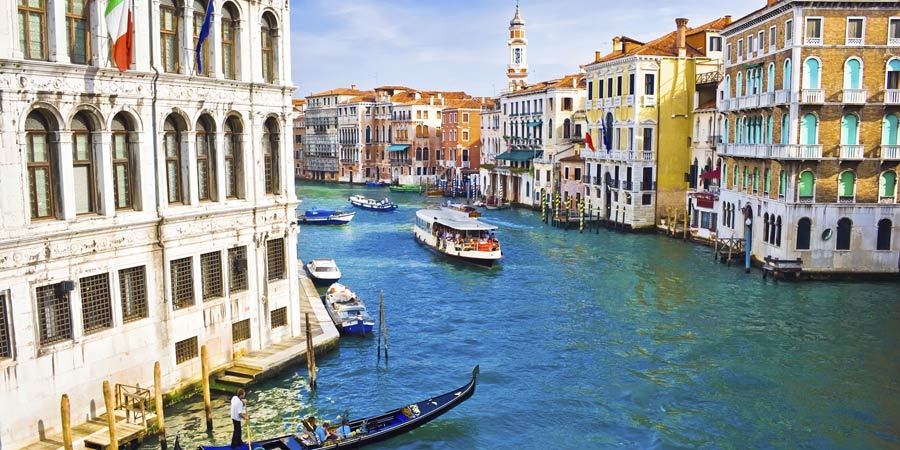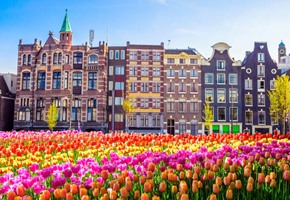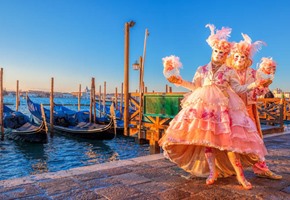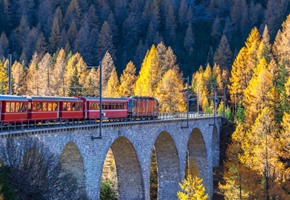The incomparable 'Floating City' of Venice is many things: iconic; ancient; unique in a multitude of ways. Yet, there are many intriguing facts about the unmistakable city on the lagoon that are rarely spoken beyond its canals. Today, we're taking a sneak peek at some of the secrets of Venice, with a list of our Top 10 favourites.
1. 'Real' Venetian food isn't what you think
Venice's history is rooted in its place as an important trading port, ideally situated for centuries of trade that necessarily had to pass through Venetian ports before being exported around the known world. This history has had effects on Venetian cuisine that distance it from the food staples of mainland Italy, with strong Turkish influences and a reliance on local ingredients - primarily fresh fish from the salty waters of the lagoon. To experience authentic Venetian cuisine, avoid menus dominated by pizza and bolognese, and to keep with local etiquette, don't use condiments or parmesan - savour the flavours as intended.
2. The streets are very small
Venice is often described as grand, and whilst its waterways have seemingly endless room, its streets are decidedly smaller. If you're claustrophobic, be sure to visit in the quieter months, when the crowds are thinner and the streets have room to breathe.
3. Google maps aren't always reliable
The Google Maps app is often a saviour to the modern traveller; as long as you have data (and currently, there are no roaming charges for UK devices within Europe), you can find a way out of any accidental wrong-turn. Not so within Venice. Thanks to the close streets lined with tall buildings, Google Maps is often slow, and loses its GPS signal relatively frequently. Additionally, some streets are misnamed, (especially those that have been shortened on street signs), often adding to the confusion. A standard map will prove handy - be sure to request one from your hotel.
4. The vaporetto timetables change frequently
If you like to plan far ahead, this may prove frustrating, but the timetables for the vaporetto - or, water buses - frequently change, according to seasonal demands and infrastructure improvements. A timetable is available at each stop, and the most up-to-date version can be downloaded from the city's website, close to your time of departure.
5. Most of the main city can be reached on foot
Despite its reputation as a watery city accessible only by boat, the main downtown area of Venice is largely accessible on foot, across the series of incredible bridges, big and small, that litter the central region. Do be aware of bridges with gates; some may close at night, necessitating a different route after dark.
6. Venice was once a republic
Italy's history, as a nation, is long and turbulent, with each region proud to reminisce on its own role as one of many fractured states that today makes up a united, and incredible, whole. However, Venice has a slightly larger claim to fame in this respect, having once been a republic: its own nation, ruled by noblemen and merchants, in stark contrast to the royal duchies and monarchies across the majority of Europe. The city is pretty proud of this independent heritage, an important part of its identity, even to this day.
7. Its past is bloody and fascinating
The republic of Venice was a rich and terrifying ancient world, with a complex political system headed up by noblemen, and a dedication to decapitation that modern visitors may find terrifying. Close to the Palazzo Ducale, two pillars still stand to signify the location for beheadings in the days of yore, whilst inside of the palace walls, the tale of further horrors awaits.
8. The quiet backstreets are hard to find - but well worth the effort
Venice suffers for its reputation, in that so many of the main streets have been flooded with tourist shops and tacky restaurants serving sub-par cuisine in a very un-Venetian style. Unlike Rome, the backstreets of Venice can be harder to find, partly due to the labyrinthine nature of the streets, and the added confusion of large crowds in summer. However, the effort is worth it; the quiet streets contain authentic local restaurants, charming cafes, and delicious bakeries offering bitter espresso alongside a range of delectable cakes. Make the effort, and you are sure to be rewarded handsomely.
9. Guided tours are helpful for uncovering the city's history
Venice is steeped in history, so much so that it can be easy to miss; with a story lurking on every corner, it takes an expert to truly know the background of the vast array of bridges, monuments, ancient buildings that constitute the city. Guided tours are easy to arrange, and relatively inexpensive, especially given the huge insight they offer into the otherwise unspoken history of Venice. Palazzo Ducale (or Doge's Palace) particularly benefits from insider knowledge, to help identify the hidden passageways, stolen artwork, and the purpose of each grand room.
10. Casanova was imprisoned here
The final fascinating fact we love about Venice is that the world-famous Giacomo Casanova was once a prisoner in the Palazzo Ducale. Little is known about the reason for his imprisonment, though it is likely he was taken as a political prisoner, as a move against his radical writings and infamous behaviour. Even more interestingly, he didn't serve his full sentence; imprisoned in the 'leads', the third-floor prison cells of the palace, Casanova escaped after 15 months - how, exactly, is still unknown.






